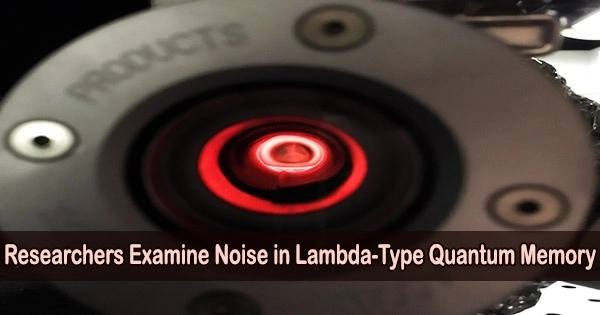In the future, information will be stored in objects subject to the microscopic principles of quantum mechanics and used by communications networks and computers. This capability may support computers with unheard-of power and communication with substantially improved security.
Memory devices that can store quantum information and make it available for retrieval at any time will be a crucial part of these technologies.
Virginia Lorenz, a professor of physics at the University of Illinois Urbana-Champaign, studies Lambda-type optical quantum memory devices, a promising technology that relies on light interacting with a large group of atoms. She is developing a device based on hot metallic vapor with graduate student Kai Shinbrough.
In addition to developing a working device, the researchers are also offering some of the first theoretical assessments of Lambda-type devices. In Physical Review A, they most recently published the first variance-based sensitivity analysis describing the impacts of experimental noise and flaws.
“Prior to this paper, you would just have to assume that everything in the quantum memory behaves ideally,” Shinbrough said. “This is the first time that things like noise have been considered, and the results of our analyses inform experimental design.”
Our analyses have allowed us to develop a better-informed experiment taking full advantage of our device’s properties. Moreover, we have developed a framework that allows others to perform the same analyses for their experiments.
Professor Virginia Lorenz
A group of atoms in a lambda-type quantum memory interact with two types of light: single photons that are absorbed and contain quantum information, and strong laser pulses that regulate when the photons’ information is absorbed and released. The optimal option is decided by the characteristics of the atoms and the guiding laser pulses, and there are a number of storage-and-retrieval methods that depend on various mechanisms.
These protocols have been studied in the past in perfect circumstances. Effects in experimental situations such device noise and tiny faults were not covered. To fill this gap in the literature and create a reliable quantum memory device, Shinbrough, and Lorenz have to comprehend these effects.
They examined how a Lambda-type device’s memory efficiency a gauge of how frequently the device performs as intended is affected by random device noise as well as sluggish overall drift in experimental settings.
“The techniques we used are well established in classical physics and engineering, but we’re applying them to a quantum system for the first time,” Shinbrough said.
The researchers employed the Sobol’s sensitivity analysis method to investigate how the simultaneous variation of all factors effects memory efficiency in addition to how noise and drift in experimental parameters separately impact device performance. They were able to do this to establish the parameters that affected each protocol the most and how differences in various parameters interact.
The main finding of this analysis, according to Shinbrough, is a knowledge of how various experimental parameters may be adjusted to account for flaws in various environments. He gave the example of variation in the arrival times of the control pulse and the single photon.
Each memory mechanism relies on a carefully tuned delay in the arrival times. If this delay starts to drift, it is possible to lengthen the control pulse such that the overlap with the single photon is about equal and the effect on memory performance is lessened.
The results of this analysis have informed Shinbrough and Lorenz’s experimental efforts. The scientists discovered that while certain factors, such as fluctuations in the hot metal vapor, are frequently insignificant, others, such as the properties of the regulating pulse, can significantly affect the outcome of the experiment.
“Our analyses have allowed us to develop a better-informed experiment taking full advantage of our device’s properties,” Lorenz said. “Moreover, we have developed a framework that allows others to perform the same analyses for their experiments.”





